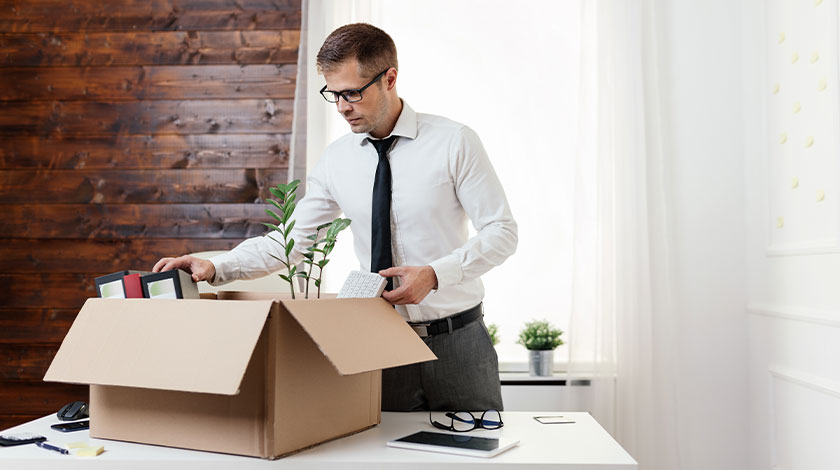Pack and Move Your Home Office with Ease: Best Practices and Essential Tips

Your home office likely contains valuable equipment such as a computer, printer, scanner, and other electronics. Properly packing and moving these items ensures that they are protected during transportation and arrive at your new home in good condition.
Your home office likely contains important documents such as contracts, financial records, and personal information. Properly packing and labeling these documents ensures that they are easily accessible when you need them after the move.
Properly packing and labeling your home office items can save you time and reduce stress during the moving process. You will be able to easily find what you need and avoid the hassle of searching through boxes.
Challenges Involved in Moving a Home Office
Time Management: Moving a home office requires careful planning and organization. You need to set aside time to pack your equipment and documents, which can take longer than you anticipate.
Fragile Equipment: Home office equipment such as computers, printers, and monitors are fragile and require special care during the move. You need to ensure that these items are properly packed and protected to avoid damage during transportation.
Data Loss: If you have important files and data stored on your computer, there is always a risk of data loss during the move. You need to ensure that your data is backed up and stored safely before packing your computer.
Disruption of Work: Moving a home office can be disruptive to your work schedule. You may need to take time off from work to pack and move your office, which can impact your productivity and income.
Limited Space: Your new home may not have enough space to accommodate your home office. You need to plan ahead and decide what items to bring and what to leave behind.
Planning Your Home Office Move
Assess your Home Office Needs
Before you start packing your home office, take some time to assess your needs.
-
Determine which items are essential and which ones can be replaced or discarded.
-
This will help you to declutter and avoid packing unnecessary items.
-
You should also take inventory of your office equipment and supplies to ensure that everything is accounted for during the move.
Create a Moving Timeline
Creating a moving timeline is important to ensure that you stay on track and meet all of your deadlines.
- Prioritize tasks and set deadlines for each phase of the move. For example, you can set a deadline for packing your computer and peripherals, and another deadline for packing your paperwork and supplies.
It's also important to coordinate your home office move with other moving tasks. For example, if you're packing the rest of your house, you may want to pack your home office last so that you can continue to work until the last minute.
Determine your Packing and Transportation Needs
Once you've assessed your home office needs and created a moving timeline, it's time to determine your packing and transportation needs. Consider hiring professional movers to assist with packing and transporting your home office equipment, especially if you have fragile items that require special care.
You should also purchase packing materials such as boxes, tape, and packing paper to ensure that your items are properly protected during the move.
Label and Organize your Items
Labeling and organizing your home office items is essential to ensure that everything is accounted for during the move.
-
Use a color-coding system or labeling system to identify which boxes contain home office items.
-
You should also create an inventory list of all of your home office items and their corresponding box numbers to ensure that nothing is lost during the move.
Set Up your New Home Office
After you've moved into your new home, it's important to set up your new home office as soon as possible.
-
Unpack your boxes and organize your items according to your labeling system.
-
Set up your computer and peripherals and test to ensure that everything is in working order.
-
Once your home office is set up, you can get back to work and resume your normal routine.
Overall, planning your home office move requires careful consideration and organization. By following these steps, you can ensure that your home office move is a success and that you're back to work in no time.
Organizing Your Home Office
Organizing your home office is essential for productivity and efficiency. Here are some important steps to follow when organizing your home office:
Sort and Declutter
The first step in organizing your home office is to sort and declutter.
-
Go through papers, files, and office supplies to discard or donate unnecessary items.
-
This will help to reduce clutter and create more space in your home office.
-
Organize your workspace to make packing more efficient.
-
Group similar items together, such as files or office supplies, to make packing and unpacking easier.
Back Up Important Files and Data
Backing up important files and data is essential to protect against data loss during the move.
-
Create digital copies of essential documents and store them in a secure location.
-
Backup your computer and other electronic devices, such as your phone or tablet, to ensure that you don't lose any important files or data during the move. This will also make it easier to set up your new home office and continue working without interruption.
Create an Inventory List
Creating an inventory list is essential to keep track of all of your office items during the move. Use a spreadsheet or notebook to list all of your items, including their condition and location. This will make it easier to unpack and organize your home office in your new location.
Invest in Storage Solutions
Investing in storage solutions such as file cabinets, shelves, or organizers can help to keep your home office organized and clutter-free.
Use file cabinets to store important documents and papers, and use shelves or organizers to store office supplies and other items.
Establish a Routine
Establishing a routine can help to keep your home office organized and efficient. Set aside time each day or week to clean and organize your home office. This will help to reduce clutter and ensure that your workspace is always ready for work.
Overall, organizing your home office requires time and effort, but the benefits are well worth it. By following these steps, you can create a productive and efficient workspace that will help you to achieve your goals and work more effectively.
Packing Your Home Office
Packing your home office can be a daunting task, but with the right approach, it can be done efficiently and effectively. Here are some important steps to follow when packing your home office:
Gather Packing Materials and Supplies
The first step in packing your home office is to gather all the necessary materials and supplies.
-
Obtain sturdy boxes, bubble wrap, packing tape, and other necessary materials.
-
Consider specialized containers for fragile or sensitive equipment, such as monitor boxes for computer screens.
Pack Office Equipment and Electronics
-
Safely packing computers, printers, and other electronic devices is essential to prevent damage during the move.
-
Use original packaging when possible for added protection.
-
If you no longer have the original packaging, wrap the equipment in bubble wrap or foam and place them in sturdy boxes.
Also Read: How to safely pack electronic items
Pack Files and Paperwork
Organizing and labeling files is essential for easy access in your new office.
-
Use file boxes or portable filing systems to keep documents secure.
-
Label the boxes clearly to make it easy to identify the contents.
Pack Office Supplies and Smaller Items
-
Use smaller boxes or containers to organize and pack office supplies such as pens, pencils, staplers, and paper clips.
-
Label containers for easy unpacking and organization.
-
You can also use clear plastic bags or small boxes to keep things organized and prevent them from getting lost during the move.
Label and Categorize all Boxes
Labeling and categorizing all boxes is important to ensure that they are delivered to the right location in your new office.
-
Use clear, descriptive labels that indicate the contents of each box.
-
Consider color-coding the boxes by room or category for easier identification.
Moving Your Home Office
Moving your home office can be a stressful and challenging task, but with careful planning and attention to detail, it can be done smoothly and safely. With the right approach, you can relocate your home office with minimal disruption to your work and productivity.
Protect your Equipment During Transport
It's essential to ensure that your office equipment is securely packed and protected in the moving truck.
-
Use plenty of padding and packing materials to protect your equipment from damage during transport.
-
Avoid stacking heavy items on top of fragile equipment, and make sure that everything is properly secured in the truck.
Load items in the right order to avoid any damages to other equipment.
Consider Professional Moving Assistance
Moving a home office can be a complex task, especially if you have a lot of equipment and supplies. Consider the benefits of hiring a professional moving company to assist with your move. Look for a company with experience handling office equipment, and be sure to get references and reviews from previous clients.
-
Professional movers can help with every aspect of your move, from packing and loading to transportation and unloading.
-
They can also provide additional services, such as unpacking and setting up your equipment in your new office.
-
This can save you time and reduce the stress of moving your home office.
Conclusion
Packing and moving a home office may seem like a daunting task, but with careful planning, organization, and attention to detail, you can make the process smoother and more manageable. By assessing your office needs, creating a timeline, decluttering, and backing up important files, you'll be well-prepared for the packing process. Remember to gather the necessary packing materials, securely pack your equipment, and keep everything organized and labeled for easy unpacking in your new space.
During the move, prioritize the protection of your equipment and consider hiring professional movers if needed. Finally, take the time to plan your new office layout, reassemble your equipment, and organize your files and supplies. By following these tips and best practices, you can successfully transition your home office to a new location, ensuring minimal disruption to your work and productivity.











